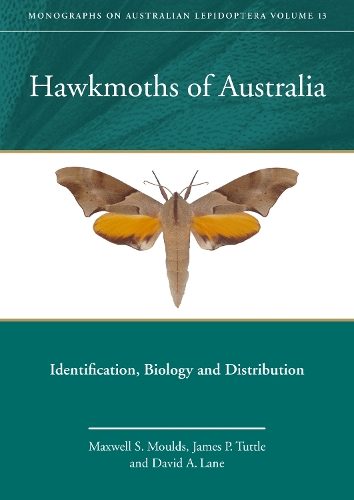
Hawkmoths of Australia: Identification, Biology and Distribution
(Hardback, Volume 13)
Publishing Details
Hawkmoths of Australia: Identification, Biology and Distribution
By (Author) Maxwell S. Moulds
By (author) James P. Tuttle
By (author) David A. Lane
13
CSIRO Publishing
CSIRO Publishing
1st January 2020
Volume 13
Australia
Classifications
General
Non Fiction
Taxonomy and systematics
595.78
Physical Properties
Hardback
424
Width 210mm, Height 297mm
Description
Hawkmoths are large charismatic insects with highly variable and colourful larvae. Some species are specialised in their habitat preferences, but others are widespread and often encountered in gardens. However, little is known about most species, and associating the adults with their larvae has previously been difficult or impossible.
Hawkmoths of Australia allows identification of all of the Australian hawkmoths for the first time and treats species found on mainland Australia and all offshore islands. It presents previously undescribed life histories of nearly all species and provides a comprehensive account of hawkmoth biology, including new parasitoids and their hawkmoth hosts. Detailed drawings and photographs show the external and internal morphology of adults and immatures, and eggs, larval instars and pupa. Keys are provided for last instar larvae and pupae of the 71 species that the authors have reared. A glossary, appendices to parasitoids and larval foodplants, an extensive reference list with bibliographical notes and a comprehensive index conclude the book.
Author Bio
Dr Maxwell S. Moulds is an award-winning writer and a Senior Fellow at the Australian Museum. In 2016, he was awarded the prestigious Australian Natural History Medallion for outstanding contributions to Australian entomology, and he is an Honorary Life Member of the Entomological Society of Queensland.
James P. Tuttle has served as President, Treasurer and for 13 years as Season Summary Editor of the Lepidopterists Society. He has published critically acclaimed textbooks and numerous journal articles on the Lepidoptera of Australia, North America and South America.
David A. Lane has a keen interest in the Lepidoptera of the Indo-Australian area, particularly northern Australia, Papua New Guinea and East Timor. He has published widely in journals in Australia and Europe, with particular emphasis on Saturniidae and Sphingidae.
